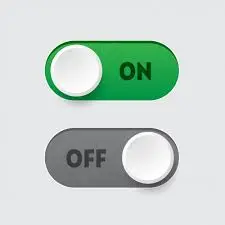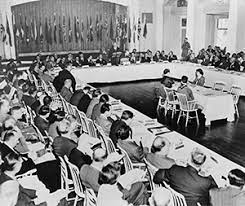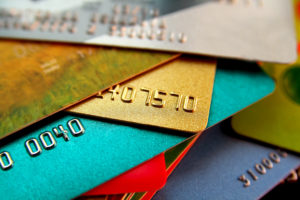So, there were goldbugs, greenbacks, and also a third group called the free silver advocates. They were kind of a mix between the two other camps. These people, who were typically farmers, were convinced by the arguments of the goldbugs that a species back currency was important. They also agreed with the Greenbacks, arguing that the gold standard was deflationary and supported the rich.
Free silver advocates wanted to expand the money supply by forcing the government to use silver alongside gold to back their currency. Like the Greenbacks this group wanted to grow the money supply and make money worth less over time. This is called inflation. In 2022, we are living through a period of inflation.
From roughly 1873 to 1900 it was anyone’s guess what might happen to the nation’s money. Different parties and politicians were saying if they got elected they would change the currency. Political activist Jacob S. Coxey Sr. believed so strongly in greenback fiat currency he named one of his sons Legal Tender.
The future was uncertain. An investor might be convinced to buy a lot of silver, thinking it was about to be legitimate currency. Or, that same investor might believe that gold was a better option. Unsure of what the currencies of the future would be, it was challenging for an investor to know what was the right call to make.
 In 1900, unfortunately for the Greenbacks and the free silver advocates, president William McKinley signed the Gold Standard Act which formalized and solidified the gold standard. That isn’t the end of the story though. During World War I the US went off the gold standard, then back on the gold standard, then off the gold standard again during the Great Depression.
In 1900, unfortunately for the Greenbacks and the free silver advocates, president William McKinley signed the Gold Standard Act which formalized and solidified the gold standard. That isn’t the end of the story though. During World War I the US went off the gold standard, then back on the gold standard, then off the gold standard again during the Great Depression.
The Depression challenged the idea of the natural value of gold. In 1932-33 France worried that the US economy was ruined. They asked for all their money and bonds in the Federal Reserve Bank of New York to be converted to gold and transferred back to France.
On the gold standard paying national debts meant moving a lot of heavy, sinkable gold long distances over deep turbulent seas. Why risk it? A country didn’t actually need gold within their borders, they only needed the claim to the gold.
So, the bank in New York simply moved some gold bars around in their vault and put a label on the correct drawer that said something like “France’s Gold.” Clearly, having gold wasn’t really necessary to use gold as money. What is the point of the gold standard then?
People’s faith in the necessity of the gold standard diminished as the twentieth century progressed. After World War II the United States went on the gold standard partially. While Americans couldn’t trade their money for gold, other governments around the world could trade US dollars for gold.
 This put the US in a great position globally. While the US owned two-thirds of all the gold in the world, the rest of the industrialized world was in shambles because of the war. Due to diplomatic moves at the Bretton Woods conference in New Hampshire in 1944, the US dollar essentially became the currency of international trade.
This put the US in a great position globally. While the US owned two-thirds of all the gold in the world, the rest of the industrialized world was in shambles because of the war. Due to diplomatic moves at the Bretton Woods conference in New Hampshire in 1944, the US dollar essentially became the currency of international trade.
Many countries pegged the value of their money to the price of the dollar. Others just used US dollars as their currency. There was near unanimous global faith in the value of the dollar. A form of the gold standard remained in place in the US until 1971 when President Richard Nixon took the US off the gold standard.
 Since 1971, we have used fiat currency, and there have been few changes in currency. For example, the use of credit cards exploded along with electronic payments. Credit cards are just small loans. Electronic payments and transfers are similar to using dollars as a gold standard minus the fractional reserve. Banks move numbers around on computers, but each digital dollar is backed by one real US dollar that you can get from the bank at any time.
Since 1971, we have used fiat currency, and there have been few changes in currency. For example, the use of credit cards exploded along with electronic payments. Credit cards are just small loans. Electronic payments and transfers are similar to using dollars as a gold standard minus the fractional reserve. Banks move numbers around on computers, but each digital dollar is backed by one real US dollar that you can get from the bank at any time.
![]()
“Will Cryptocurrency be the Money of the Future?”
- Listen to Cryptocurrency e-book podcast – read by Keith Dunford, Voice Over Productions
- Cryptocurrency ebook by Morgan Franklin Fellowship
- Read blog series – “Cryptocurrency – Money of the Future”
![]()
A Journey to Personal Financial Success
At Morgan Franklin Fellowship (MFF), we support the concept of financial freedom – by teaching participants how to save by paying themselves first, invest for their future and grow their net worth.
Learning how money works and how to talk about money with others are the first steps towards recognizing an individual’s lifelong financial goals. Our online programs, podcasts, blogs, and book reviews and resources are designed to help you learn the concepts, rules and vocabulary of money, finance and investing.
Becoming an MFF Fellow
Our Standards of Financial Literacy – Learning about money series is engaging, full of interesting information, and easy to navigate. Adapted from the National Standards for Personal Financial Education developed by the Council for Economic Education (CEE), this robust curriculum features six short lessons on such important topics as earning income, understanding the value of saving and using credit. When completed, this program lays the foundation for becoming an MFF Fellow.
Becoming an MFF Fellow is the ticket to access additional MFF programs and opportunities for mentoring, networking, internships and real-world opportunities. Hear from the MFF Fellow themselves on how these opportunities encourage them to continue their journey to personal financial success.
Learn More about Money
Begin the journey towards personal financial independence today. START LEARNING TODAY